By Tommy Clarkson from the January 2013 Edition
Dizygotheca elegantissima, Aralia elegantissima or Schefflera elegantissima
Family: Arabia, Araliace or Schefflera
(Also known as False Aralia, Finger Aralia, Spider Aralia, or Thread-Leaf Aralia)
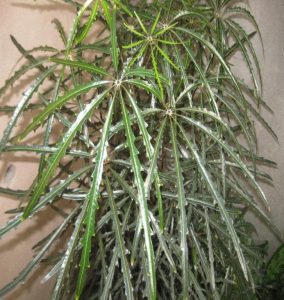
No, this is not pot, hemp, ganga, Mary Jane, swag or any of its other scores of names! (You know of what we speak that wicked weed, cannabis, which Bill Clinton said he never inhaled so many years ago!)
It is, in fact a rather attractive, understory (a plant growing below taller trees), evergreen shrub or smallish tree. Originally from New Caledonia, it can grow to anywhere between two to seven meters. It sports six to ten shiny, dark green to blackish, very slender, serrated (edged with notches or with projections resembling the teeth of a saw), palmate leave. These are reddish underneath and coppery in color as they unfold but then darken with maturity. A great container plant, the larger it grows the bigger the leaflets will become.
They do not like full sun preferring “bright shade”. They do require ample, regular watering in well drained, humusy soil and protection from the wind. (Note: Wilted leaves are a sign of overwatering.) Young ones with straight stems are seldom branched while the adult plants do so in the upper parts of their trunks.
Slow growing, over time it will lose its lower leaves. Should you wish, for whatever reason, to keep it short and shrubby,
you can cut it back each year up to six inches from the soil level in the Spring. New offsets will grow from its base.
Not only do these not grow as large “in captivity” as they might in the wild, but sadly they seldom bloom in cultivation.
When it has outgrown its pot, move it to a new pot home but use the smallest container that will hold its “plant feet” as it does best when its roots are confined. To prevent toppling, taller plants should be grown in heavier containers.
If you’ve low humidity, mist them regularly when watering. This will also help prevent invasion of this beauty by Spider Mites.
During the growing season, every two weeks or so, they delight in being fed a well balanced liquid fertilizer meal (such as 10-10-10) that has been diluted by half. In fall and winter they lose their appetite a bit so feed them only monthly.
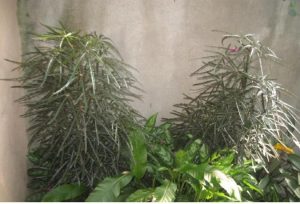
If you wish to propagate them, do so with either seeds or stem tip cuttings. The latter, as stem tip cuttings, preferably in the Spring. For best results, dip the cut end in a hormone rooting powder before inserting in moist potting mix. Then cover it with a plastic bag to raise the humidity around the cutting, keeping it warm and out of direct sunlight.
Plant these lacy leafed beauties against a light background a white wall, for instance – for the most dramatic effect lent by their dark, lacy leaves as these will be, indeed, a delightful addition to your garden. But I do, rather vigorously, discourage the smoking of their leaves by that wild, Bohemian, hippy, wild-child cousin of yours when he comes to visit!
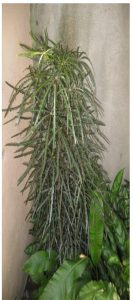
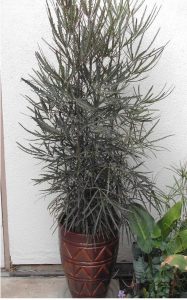
Download the full edition or view it online
—
Tommy Clarkson is a bit of a renaissance man. He’s lived and worked in locales as disparate as the 1.2 square mile island of Kwajalein to war-torn Iraq, from aboard he and Patty’s boat berthed out of Sea Bright, NJ to Thailand, Germany, Hawaii and Viet Nam; He’s taught classes and courses on creative writing and mass communications from the elementary grades to graduate level; He’s spoken to a wide array of meetings, conferences and assemblages on topics as varied as Buddhism, strategic marketing and tropical plants; In the latter category he and Patty’s recently book, “The Civilized Jungle” – written for the lay gardener – has been heralded as “the best tropical plant book in the last ten years”; And, according to Trip Advisor, their spectacular tropical creation – Ola Brisa Gardens – is the “Number One Tour destination in Manzanillo”.
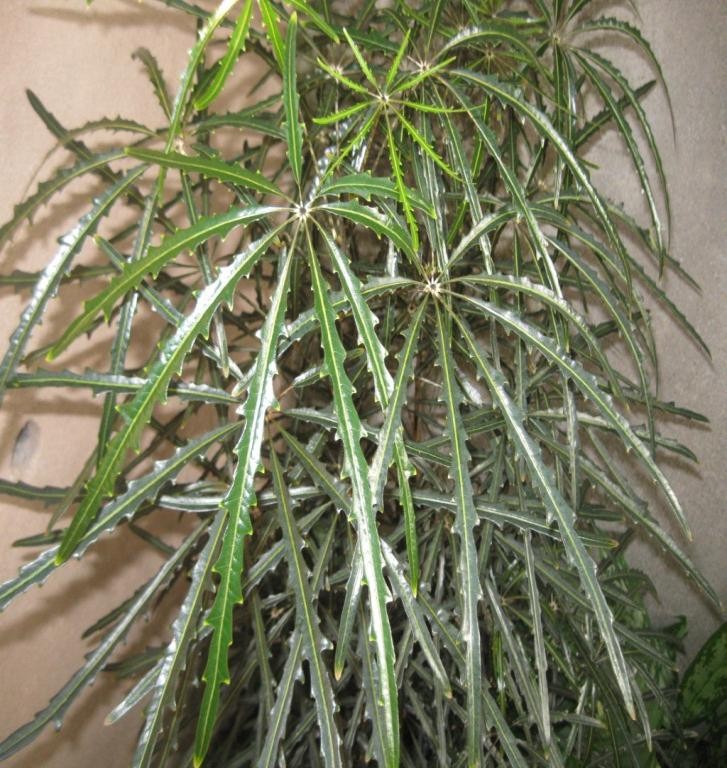



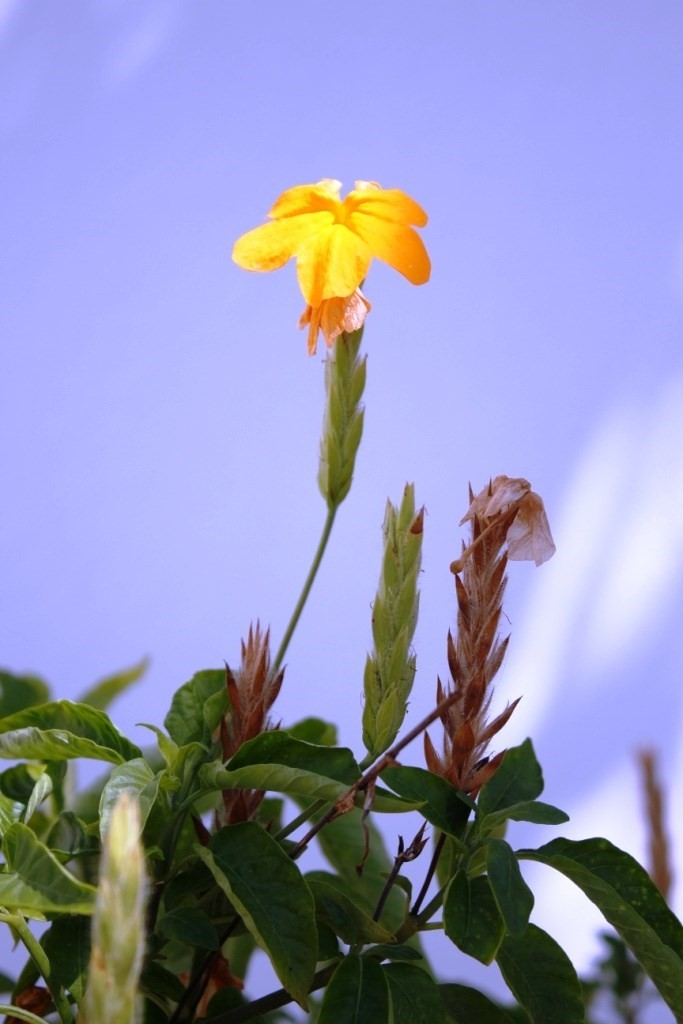
You must be logged in to post a comment.